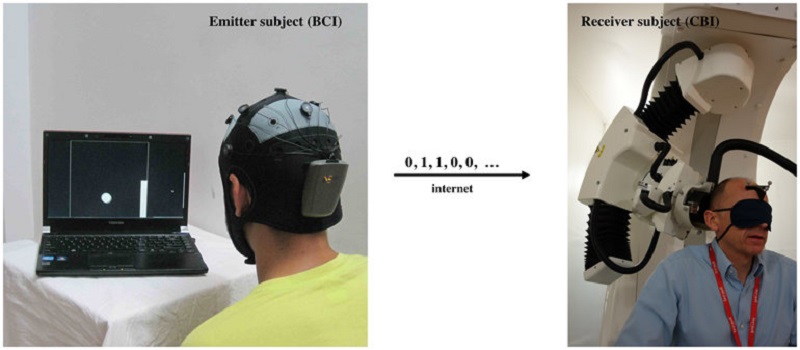In the future, the act of texting will become synonymous with calligraphy, quaint, but ultimately useless. Telepathy is slated to be the next big medium of communication, and fortunately for us, it’s right on the horizon. An international team of researchers have, in a first-of-its-kind study, successfully transmitted a message 5,000 miles from one person’s brain in France to another person’s brain in India without any invasive surgery.
We wanted to find out if one could communicate directly between two people by reading out the brain activity from one person and injecting brain activity into the second person, and do so across great physical distances by leveraging existing communication pathways,” said co-author Alvaro Pascual-Leone, MD, Ph.D, director of the Berenson-Allen Center at Beth Israel Deaconess Medical Center and Professor of Neurology at Harvard Medical School.

The team of researchers, who also included bright minds from Starlab Barcelona in Spain, Axilum Robotics in Strasbourg, France, used an Internet-connected electroencephalogram (EEG), and a robot-assisted, image-guided transcranial magnetic stimulation to excite the brain from outside of the scalp, and perform the communication.
Essentially, the procedure functions similarly to a brain-computer interface control in which electrodes placed atop a human subject’s scalp harness the electrical currents of specific thoughts before a computer translates them into a robotic action. In this case, the output was another human being rather than a computer.

A total of four participants between the ages of 28 and 50 were used in the experiment; one participant engaged the brain-computer interface (BCI) to generate the thought while the other three sat in the computer-brain interface (CBI) to receive it. When the BCI participant thought the words “ciao” and “hola,” the computer translated the words into binary code and sent the data to the three participants on the CBI side. After being shown the code, the users were asked to move their hands for 1 and their feet for 0. Next, an EEG recorded the electrical signals in the sender’s brain as the recipients thought these actions to translate the binary into a neural code.
Here comes the juicy part: this newly formed neural code was transmitted to the recipients using a gentle stimulation of their visual cortex, creating bright lights in their peripheral vision representative of the original binary string; light on one side meant “1” whereas light on the other meant “0.” The data was then be decoded and communicated as “ciao” and “hola.”
Despite the simplicity of the context, the experiment was the first successful attempt at digitizing telepathy. The researchers remain confident that technology will provide a seamlessly manner of communication in the near future, supporting both brain-to-brain and brain-to-machine interfacing. The entire research paper can be downloaded here .
Source: Yahoo/PLOSone.org
Advertisement
Learn more about Electronic Products Magazine





